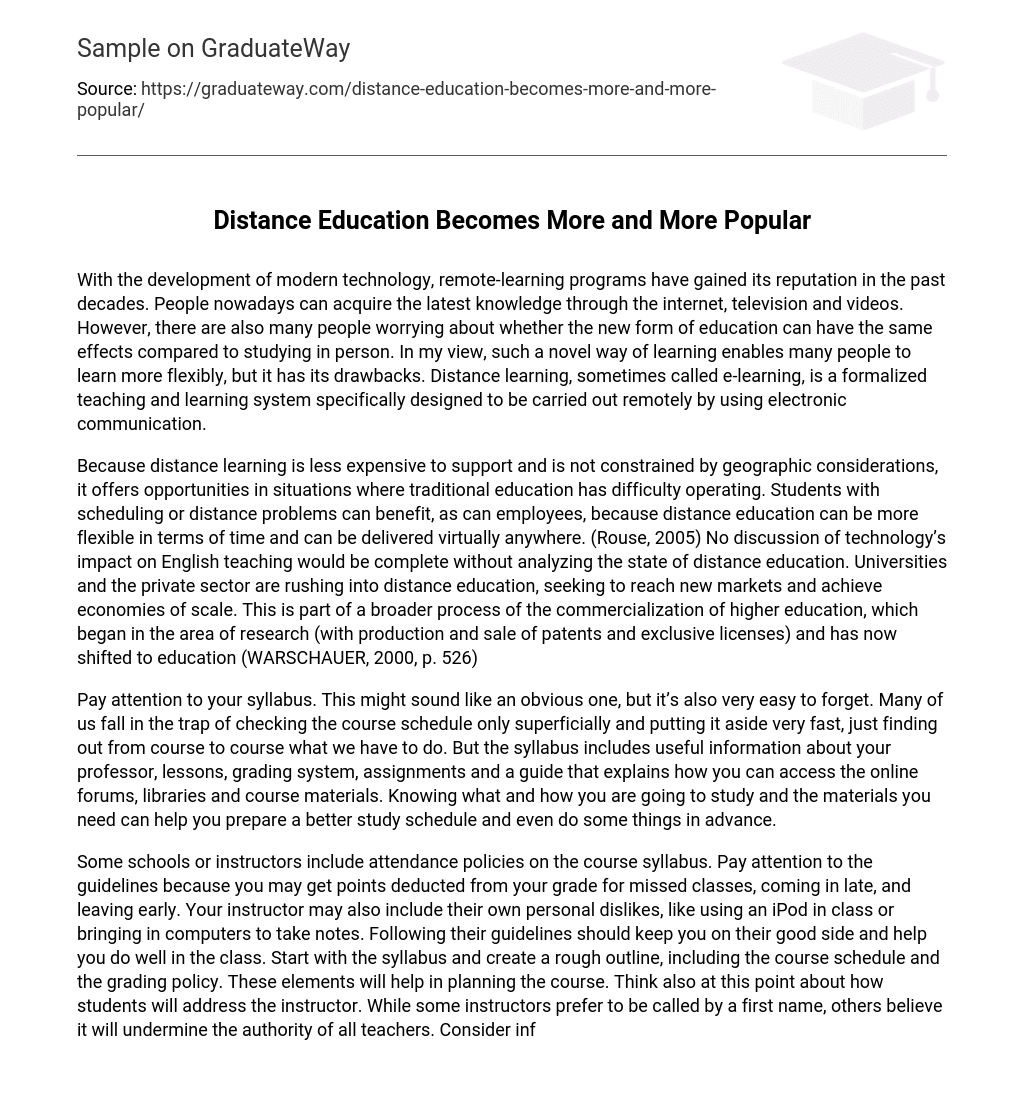With the development of modern technology, remote-learning programs have gained its reputation in the past decades. People nowadays can acquire the latest knowledge through the internet, television and videos. However, there are also many people worrying about whether the new form of education can have the same effects compared to studying in person. In my view, such a novel way of learning enables many people to learn more flexibly, but it has its drawbacks. Distance learning, sometimes called e-learning, is a formalized teaching and learning system specifically designed to be carried out remotely by using electronic communication.
Because distance learning is less expensive to support and is not constrained by geographic considerations, it offers opportunities in situations where traditional education has difficulty operating. Students with scheduling or distance problems can benefit, as can employees, because distance education can be more flexible in terms of time and can be delivered virtually anywhere. (Rouse, 2005) No discussion of technology’s impact on English teaching would be complete without analyzing the state of distance education. Universities and the private sector are rushing into distance education, seeking to reach new markets and achieve economies of scale. This is part of a broader process of the commercialization of higher education, which began in the area of research (with production and sale of patents and exclusive licenses) and has now shifted to education (WARSCHAUER, 2000, p. 526)
Pay attention to your syllabus. This might sound like an obvious one, but it’s also very easy to forget. Many of us fall in the trap of checking the course schedule only superficially and putting it aside very fast, just finding out from course to course what we have to do. But the syllabus includes useful information about your professor, lessons, grading system, assignments and a guide that explains how you can access the online forums, libraries and course materials. Knowing what and how you are going to study and the materials you need can help you prepare a better study schedule and even do some things in advance.
Some schools or instructors include attendance policies on the course syllabus. Pay attention to the guidelines because you may get points deducted from your grade for missed classes, coming in late, and leaving early. Your instructor may also include their own personal dislikes, like using an iPod in class or bringing in computers to take notes. Following their guidelines should keep you on their good side and help you do well in the class. Start with the syllabus and create a rough outline, including the course schedule and the grading policy. These elements will help in planning the course. Think also at this point about how students will address the instructor. While some instructors prefer to be called by a first name, others believe it will undermine the authority of all teachers. Consider informing students that they do not want to call female teachers with a PhD “Mrs.” rather than “Dr.” A safe bet is to teach students to always use “Professor” unless told otherwise. Be thorough with the syllabus but not exhaustive. This in an area in which many faculty members make mistakes. Since they correctly view the syllabus as a contract, they want to include everything that the student should or should not do. This quickly becomes a list of prohibitions, such as “no hats in class,” “no talking,” and “no tardiness.”
However, this approach undermines a sense of trust in the student. In spite of concerns the instructor may have about the youth and inexperience of students, they quickly understand how to behave in the course. Think like a student: how would you want to be treated if you were taking a course? Write a syllabus with that perspective in mind. Think about texting in class. While it is tempting to place a prohibition against texting on the syllabus, a student who is texting in class is typically not disruptive, although the instructor may view the behavior as insulting and rude. In this case, patience is a virtue. Consider using a combination of brief explanations of why behavior is disruptive followed by periodic silences throughout the rest of the course when behavior becomes excessive. And, if all else fails, the instructor can reserve the right to kick a student out of class, which will at least solve the problem temporarily.





